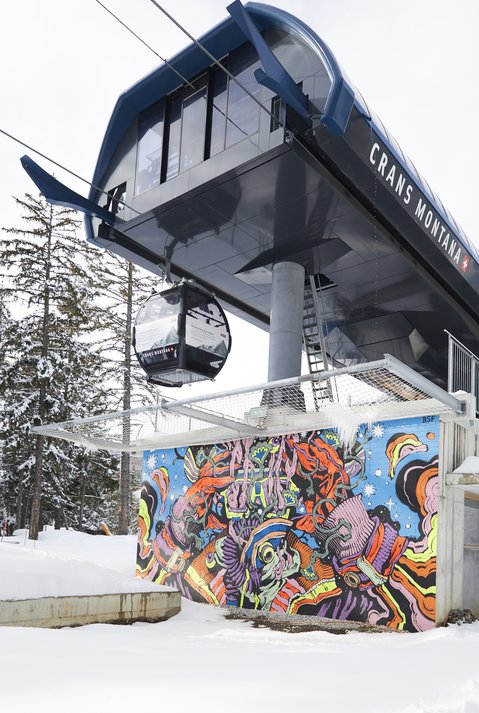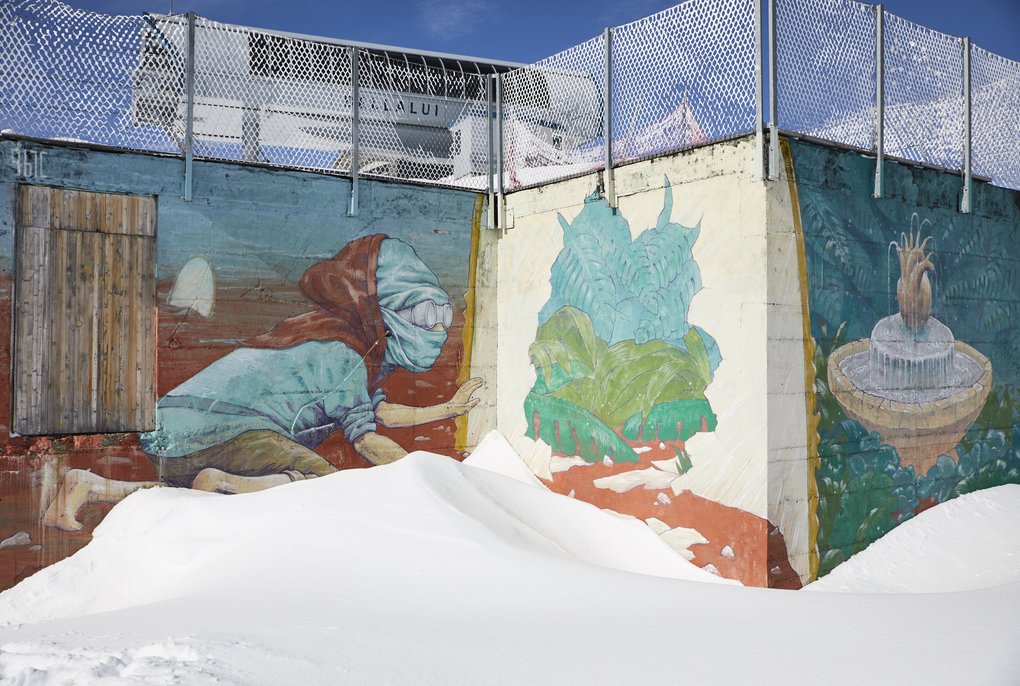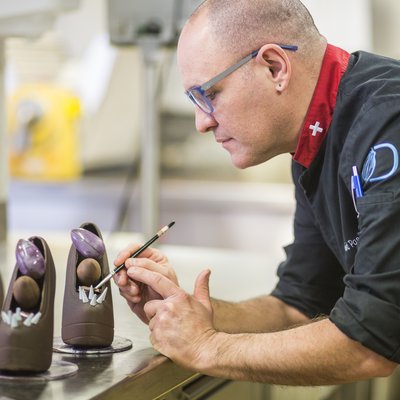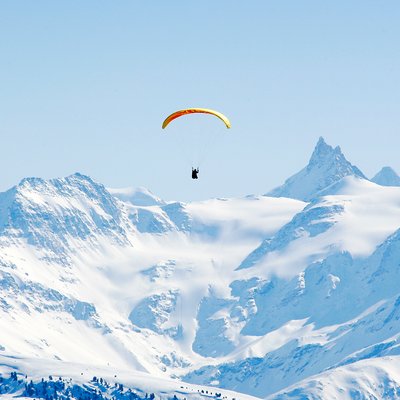Transforming Grey Into Art
Street art on the mountain: At the Vision Art Festival, artists make graffiti works on concrete blocks. They blend in with nature, play with light.
When you enter the heart of Crans-Montana, it is not the lakes that stand out, one lined up after the other. You will also pass a hotel with a large-scale portrait of Roger Moore spreading out on its exterior wall. The actor spent the last stage of his life in the high-altitude town with its magnificent air and remained loyal to Crans-Montana until his final days. The graffiti is one of 20 art works that transform underused surfaces in the town and its mountains into vibrant works of art. They are created during the Vision Art Festival – that week in summer when street artists from all over the world gather in Crans-Montana to brighten up buildings, mountain railway stations or house facades with colour and creativity.


“It’s fascinating how a little colour can change a building’s whole feel,” Gregory Pages, who initiated the annual festival in 2015, explains. The idea was born on a random day when he was sitting on the chairlift up to the mountain station of Cry d’Er. “Back then, the station was nothing but a plain concrete block.” He remembered the street art he had seen on a recent trip to Paris and contacted the local officials who agreed to do a “test run” of two pieces of art in the town. As the owner of a gallery for contemporary art, Gregory knew and invited the creators of the first two pieces of urban art: Hebru Brantly, an U.S. citizen, and Icy and Sot, two brothers from Iran. There was less pushback than Gregory had expected and both paintings were well received, paving the way for him and his team and the realisation of the first edition of the Vision Art Festival.
Art x Nature
In Gregory’s own apartment you can find art even on the bathroom walls. From the little balcony you can see the mighty mountains of Crans-Montana. For Gregory, nature and art have always belonged together. “This was my first piece of art,” he says and points at an orange square on the living room wall. “An artist gave it to me when I was six after losing a bet against me.” Gregory and his brother grew up in the art world, he explains. In the 19080s, his father, of German-French origin, ran an art gallery in Germany, where Gregory grew up; his Swiss-Iranian mother was an art lover and both sets of grandparents were art collectors. The two boys spent their winters with their grandparents in Crans-Montana, where Gregory also learned how to ski when he was two. Art and mountains were integral parts of his childhood, like sandpits and playing ball games to other children. After studying politics, Gregory moved to Crans-Montana for good. Here, he soon turned his back on politics and returned to the symbiosis of nature and art: In winter, he teaches people how to ski; in spring it is time to plan and organise the festival.


Crans-Montana and the arts
At the beginning of the 20th century, it was mainly pulmonary patients who came to Crans-Montana for recovery. The town, located at 1,500 metres above sea level, first became a spa resort, and, subsequently, a holiday destination. This was mostly thanks to Dr. Stephani, the father of all health resorts. The photos he took in the Crans-Montana region attracted artists from all over the world, among them the famous Swiss painter Ferdinand Hodler, who came here more than 100 years ago to visit his son, who had fallen ill with tuberculosis. During his stay, he made twelve paintings of the place’s lakes. “One of them was sold at Christie’s for eight million Swiss francs,” Gregory tells us. “In the 20s and 30s, a lot of people came here for the light and the place in general, from Paris, Prague or the Netherlands. Leon Keer, a Dutch street artist, stated that the light and atmosphere of Crans-Montana inspired his colour palette for years.”


Street art without streets
And the light truly is special. “The sunsets alone vary in colours and contrasts from day to day,” Gregory says. Many artists who usually work in urban areas have to adapt their concepts once they get to Crans-Montana; painting in one of the sunniest places on earth at 2,500 metres above sea level is completely different to painting in, say, the Parisian metro. One of the factors is that the artwork needs to merge with its natural surroundings, “that the artists make concrete cubes as beautiful as the nature surrounding them.” Nature, again, shows many faces in the course of time. A painting appears different in a green and sunny landscape than when surrounded by snow. “Up here, the factor of sunlight is much more influential than at sea level,” Gregory continues. “Also, temperatures vary by up to 70°C from summer to winter, making colours fade much faster than elsewhere.” This is why, following the basic principle of graffiti, art works that have their best days behind them are simply repainted.
Today, the Vision Art Festival team receives about 450 applications each year, many on Instagram, even though there is no official call and only ten street artists can participate. The festival has made a name for itself in the scene, and the summer week they get to spend in Crans-Montana is a very special time for all artists. Friendships are forged and many artists return as tourists – to see how time treated their artworks and for the mountains, the place’s spirit and, of course, the light. The light that is so special, here, “in the world’s only museum that you can visit by foot, by bike, on skis or by car.”
Text: Martha Miklin
Photos: Sophie Kirchner // friendship.is
May 6, 2020














